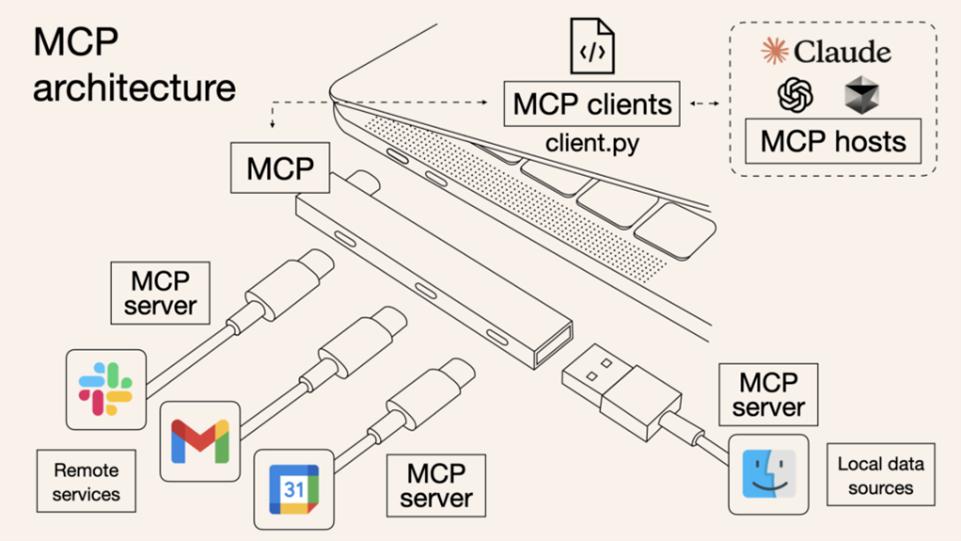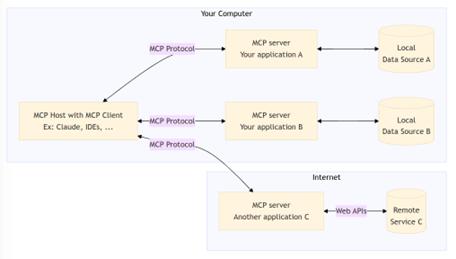AI Blog: Model Context Protocol (MCP) Part 1
11 July 2025
Welcome back to our AI blog series. Today, we’re diving into the world of Model Context Protocol (MCP) – what they are, how they connect AI agents to databases, APIs and more, and why it really a big deal.
What is Model Context Protocol (MCP)?
MCP is an open protocol that standardises how applications provide context to Large Language Models (LLMs).
As we have discussed previously, an AI agent works as your AI-powered intern or teammate. For example, you may have built a brilliant ticket booking AI agent and you ask it to find the best deals on flights to Hokkaido for this December for your Christmas Holiday. You make a travel plan within your budget, book a hotel and then add it all to your calendar. It sounds simple, but actually this kind of task is a quite challenge for AI. The reason is that for each step of this task, such as checking flight prices, booking hotels, purchasing a ski pass, and updating calendars often requires a completely separate, custom-built connection. It is like every electronic device you have: the phone, the computer and the headset need different adaptors. This workflow is time-consuming and easy to break.
Now we have MCP, working as the universal adaptor, or even better, the ‘USB-C port’ for all the AI tools. It’s a real game changer. This new and intelligent standard gives AI agents a simple and standardised way to plug into all kinds of tools, data and services.

In summary, MCP gives AI agents a consistent way to connect with everything they need to complete the task, making AI go from just being smart to being genuinely useful.
How Does it Work?
The Architecture of MCP
To get a clearer picture, let's look at the basic setup of how MCP operates:

At its core, MCP follows a client-server architecture where a host application can connect to multiple servers.
Join us next time for more exciting news on AI MCP!

